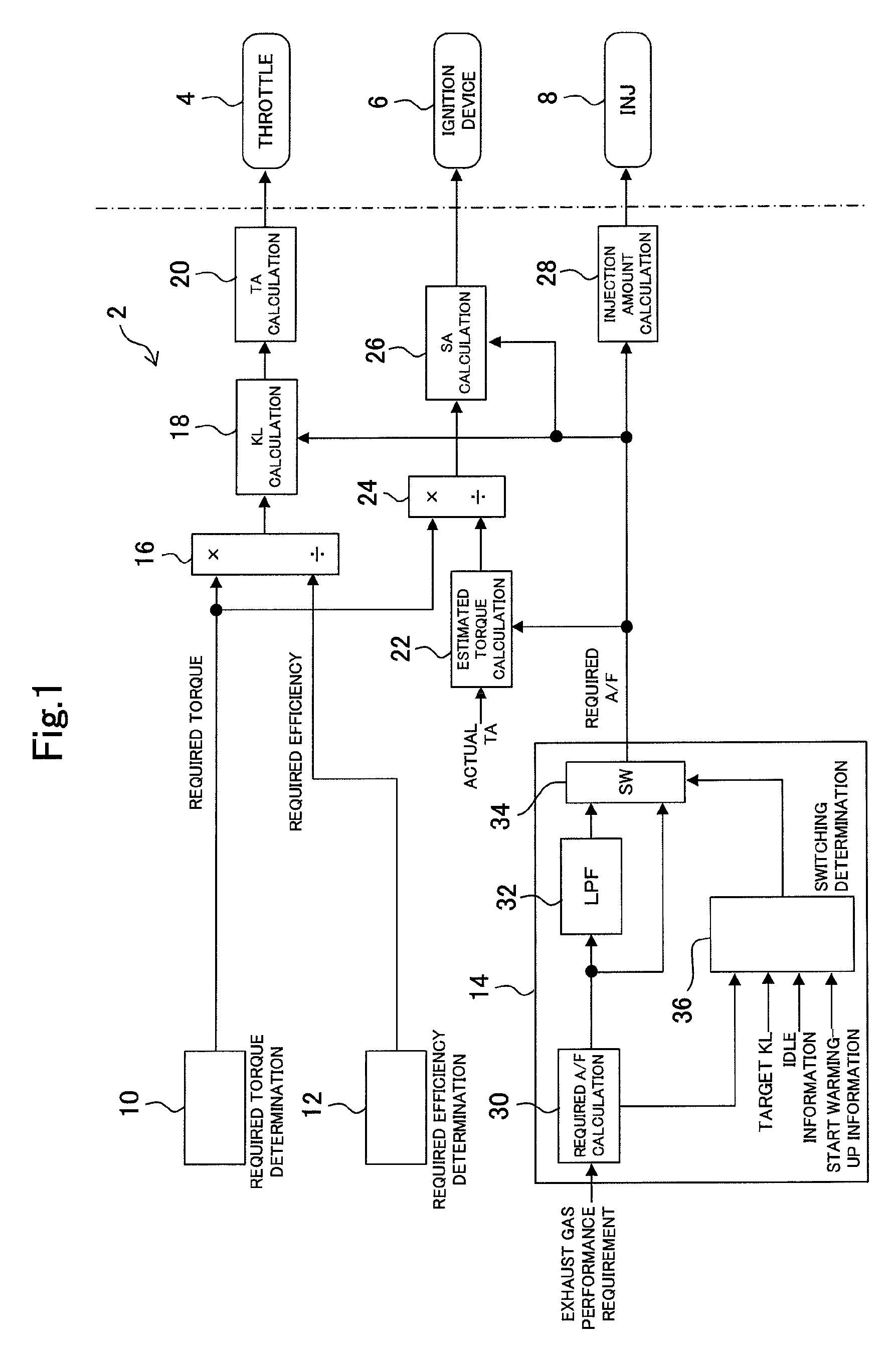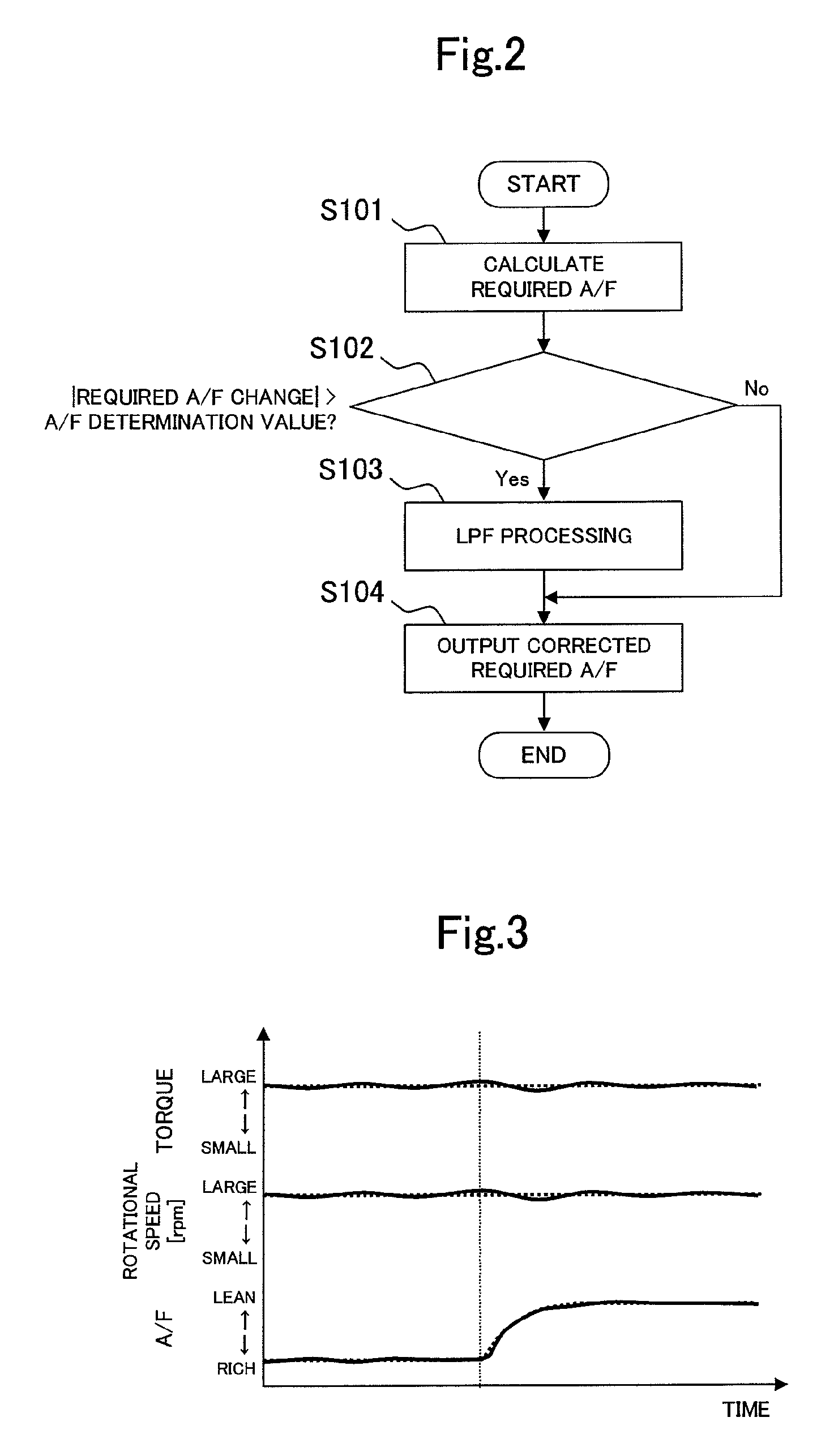Control device for internal combustion engine
a control device and internal combustion engine technology, applied in the direction of electric control, brake systems, instruments, etc., can solve the problems of reducing the change speed and reducing the effect of the effect of reducing the change speed and reducing the required air-fuel ratio
- Summary
- Abstract
- Description
- Claims
- Application Information
AI Technical Summary
Benefits of technology
Problems solved by technology
Method used
Image
Examples
embodiment 1
[0043]Embodiment 1 of the present invention will be described with reference to the drawings.
[0044]In embodiment 1 of the present invention, an internal combustion engine (hereinafter, an engine) which is a control object in embodiment 1 of the present invention is a spark ignition type four cycle reciprocating engine. A catalyst device for purifying an exhaust gas is provided in an exhaust passage of the engine. The control device controls the operation of the engine by operating actuators included in the engine. The actuators which can be operated by the control device include an ignition device, a throttle, a fuel injection device, a variable valve timing mechanism, an EGR device and the like. However, in the present embodiment, the control device operates the throttle, the ignition device and the fuel injection device, and the control device controls the operation of the engine by operating these three actuators.
[0045]The control device of the present embodiment uses torque, an ...
embodiment 2
[0069]Embodiment 2 of the present invention will be described with reference to the drawings.
[0070]A difference between the present embodiment and embodiment 1 lies in the determination method of the required air-fuel ratio by the required air-fuel ratio determining unit 14. In more detail, the difference lies in the content of the switching determination of the switch 34 by the switching determining unit 36. Switching determination by the switching determining unit 36 of the present embodiment is performed based on the magnitude of the load of the engine in addition to the change amount of the required air-fuel ratio. This is because the magnitude of the load of the engine is related to the magnitude of the torque variation in the case of the required air-fuel ratio being changed. More specifically, the generation torque of the engine is small at the time of a low load, and the torque variation accompanying the change of the required air-fuel ratio is relatively small. Therefore, i...
embodiment 3
[0073]Embodiment 3 of the present invention will be described with reference to the drawings.
[0074]The present embodiment is common to embodiment 2 in the point that the magnitude of the load of the engine is added to the conditions for reducing the change speed of the required air-fuel ratio. However, the present embodiment is characterized in that the air-fuel ratio change determination value which is the determination reference about the value of the change amount of the required air-fuel ratio is made variable in accordance with the load of the engine.
[0075]FIG. 5 is a diagram expressing the processing performed in the required air-fuel ratio determining unit 14 in the present embodiment in a flowchart. According to the flowchart, the required air-fuel ratio is calculated in the first step S301. Next, the map stored in the switching determining unit 36 is referred to, and the air-fuel ratio change determination value corresponding to the load of the engine is calculated (step S3...
PUM
 Login to View More
Login to View More Abstract
Description
Claims
Application Information
 Login to View More
Login to View More - R&D
- Intellectual Property
- Life Sciences
- Materials
- Tech Scout
- Unparalleled Data Quality
- Higher Quality Content
- 60% Fewer Hallucinations
Browse by: Latest US Patents, China's latest patents, Technical Efficacy Thesaurus, Application Domain, Technology Topic, Popular Technical Reports.
© 2025 PatSnap. All rights reserved.Legal|Privacy policy|Modern Slavery Act Transparency Statement|Sitemap|About US| Contact US: help@patsnap.com



